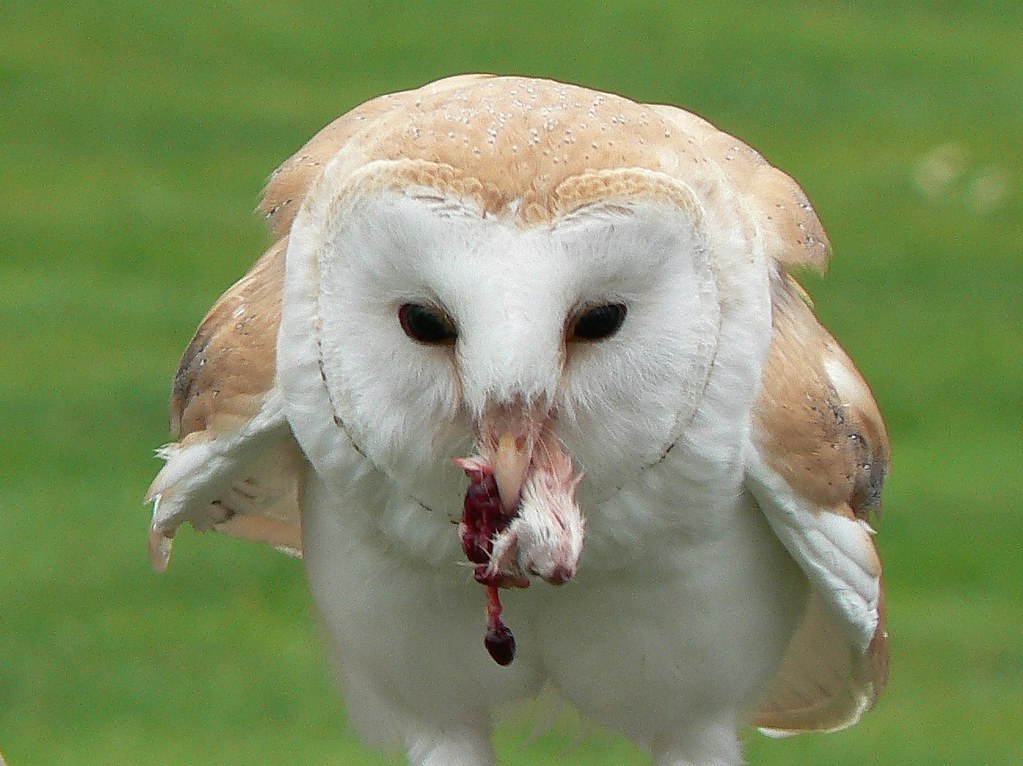Owls are not just ordinary birds, they are masterfully designed predators. Their specialized adaptations make them highly efficient at hunting and consuming their prey. These adaptations include unique facial discs that aid in sound localization, asymmetrical ears for precise hearing, and large eyes for exceptional night vision.
The ability to fly silently offers owls a competitive advantage when hunting. They can approach prey silently the serrated feathers on their wings, which reduce turbulence. They can see incredibly well in low light thanks to their keen vision and a large number of rod cells.
The capacity of owls to swallow their food whole, including bones and other indigestible pieces, is perhaps the most amazing aspect of their feeding habits. Owls, in contrast to other birds, lack a crop and have an enlarged esophagus that creates a reliable path for swallowing. Their stomach contains unique enzymes that help digest fibrous foods.
How do owls swallow their prey?
How do owls swallow their prey? Owls are unable to digest fur, teeth, bones, or feathers, thus they must swallow their prey whole or in huge pieces. Owls’ stomachs have two chambers, just like those of other birds. All the components of the owl’s diet that can be digested are liquefied in the first chamber, the glandular stomach or proventriculus. Because they lack a crop an organ that stores food after it swallows so that it can later be digest owls typically swallow their prey whole, unlike other bird species.
They will transport the dead victim to a safe location, generally up in a tree, and then begin to tear off sections of the carcass using their beaks. Without chewing, they consume the chunks whole. The inedible components of bones, skin, and fur will regurgitate as owl pellets.
According to Phylumvision.com, most owls capture and kill their prey by grasping it with their talons and puncturing its inner organs and blood arteries with fast stabbings with their talons. They will transport the dead victim to a safe location, generally up in a tree, and then begin to hack the carcass into pieces.
Prey Preferences of Owl Species:
Different owl species have different prey preferences. Barn owls, for example, prefer rodents, whereas great horned owls eat a variety of prey, including rabbits, birds, and mammals. This versatility demonstrates their ability to survive in a variety of habitats.
Owls as Bioindicators:
The existence and behavior of owls can supply information about the health of ecosystems. They reflect the overall status of their environments as top predators. Owl population monitoring can warn us to environmental changes and potential dangers.
Myths and Symbolism in Culture:
Throughout history, owls have been both admired and feared. They were associated with Athena, the goddess of knowledge, in Greek mythology. Some civilizations, on the other hand, equate owls with darkness and death. These opposing interpretations demonstrate the complexities of human perception.
Nocturnal Behaviors:
The adaptation of owls to midnight hunting has resulted in their nocturnal activity. They have acute senses that allow them to travel and hunt in the dark. Understanding their nightly activities adds to our understanding of their biology.
Survival Adaptations:
Owls’ evolutionary journey has provided them with a variety of adaptations that secure their survival. From specialized feathers to elaborately evolved digestive systems, these adaptations highlight the wonders of nature’s creation.

Final Words:
With their amazing adaptations and intriguing antics, owls reign foremost among avian predators. Every facet of their existence, from their stealthy flying to their unique digesting process, is a tribute to nature’s wonders. Understanding how owls swallow their prey sheds light on the tangled webs of species connections and the fragile balance of ecosystems.
FAQs:
Q1: Do owls regurgitate pellets after every meal?
A: Yes, owls regurgitate pellets containing undigested parts of their prey, providing valuable insights for researchers.
Q2: Can owls digest bones and feathers?
A: Owls have specialized enzymes that help break down bones and other indigestible parts, allowing them to swallow prey whole.
Q3: Why are owls considered bioindicators?
A: As top predators, owls’ presence and behavior reflect the health of their habitats, making them indicators of environmental well-being.
Q4: How do owls locate their prey in the dark?
A: Owls have exceptional night vision and acute hearing, which enable them to locate and capture prey with remarkable accuracy.
Q5: What can we do to help conserve owl populations?
A: Protecting owl habitats, promoting sustainable practices, and raising awareness about their importance are key steps in owl conservation


